Wisconsin Right Now is beginning a new series called the “No Process Files” exploring how Milwaukee County DA John Chisholm is failing to charge many cases brought forward by the police at growing numbers, at a significant cost to taxpayers, victims, and society. If you have a case you would like featured, email jim.wirightnow@gmail.com You can stay anonymous.
The Milwaukee crime stats for the first quarter of 2021 are appalling. Overall crime is up 25% year-to-date over last year. Vehicle thefts have exploded 140% from 894 to 2150. The Riverwest neighborhood has experienced a whopping 664% increase in motor vehicle thefts, from 14 to 107. Crime is skyrocketing in Bay View. Who is to blame? Cops? COVID? Aldermen insistent on defunding police? Societal decay?
There is one person who never seems to be held accountable: Milwaukee County DA John Chisholm.
The district attorney’s office is responsible for prosecuting state-level criminal offenses and county ordinance violations committed in Milwaukee County. The office prosecutes offenses including violent crimes, sexual assault, domestic violence, homicide, white-collar crimes, drug-related crimes and misdemeanor offenses. To be clear, prosecutors are a key part in the fight against rising crime, yet they seem to skate perpetually beneath the media radar.
We decided to pull back the curtain and see how tough on crime Chisholm’s office really is, and what we found may shock you.
A Wisconsin Right Now investigation found that the Milwaukee County DA John Chisholm’s no prosecution rate has exploded in the past year, with his office refusing to prosecute 6 in 10 of every felony charge requested by police. Last December, the office refused to prosecute more than 8 in 10 misdemeanor cases requested by cops. There are cases rejected after filing, which makes the total number of cases prosecuted even lower.
Last year, there was a “No Process” rate of about 60% for felonies and about 65% for misdemeanors, an overall increase of about 10% fewer cases charged over 2019.
Keep in mind that behind almost every case lies hours, if not days, weeks and months, of taxpayer-funded police investigations, a victim who feels aggrieved, and a neighborhood impacted. It’s also well-established that getting repeat criminals off the streets before they can re-offend is an effective way to reduce crime.
But what happens when the district attorney refuses to prosecute these crimes, wasting police resources and letting victims down? What happens when the county decides to enter into an initiative that claims to “create more fair, just, and equitable local justice systems across the country,” with the intent of lowering jail populations? What happens when this occurs against the backdrop of fewer jail/prison sentences and court commissioners who hand out signature bond releases, even for dangerous offenders?
For years, the Milwaukee County DA’s reputation for refusing to take cases, despite the hefty price of police investigations and the human cost of lives destroyed by crime, has vexed local police. For years, the DA rebuffed about half of all cases brought over, including felonies. But it’s gotten even worse.
To be clear, these are cases that police departments – not only MPD but also all county suburban agencies – felt were strong enough to request charges from prosecutors. Police do not typically refer weak cases for charging.
Law enforcement sources reached out to us, frustrated by the significant increase in cases that are brought to be reviewed for charging only to have their case or some charges in it “no processed.” This harms law enforcement morale.
We dug through the DA’s own data to find the answers.
We reached out to Chisholm for an interview for this story. He refused. But interestingly enough, a couple days later, a fluff piece was put out by Urban Milwaukee touting the reduction in marijuana prosecutions, with, of course, a racial spin. Chisholm did comment on that story, and it appears to be based on an article he authored on his website. But that doesn’t begin to tell the full story of the DA’s refusal to prosecute; for one, marijuana-only prosecutions are rarely felony cases, and his felony “No Process” rate is rising too.
For another, Chisholm claimed he wanted to prioritize violent crime – yet his office is rejecting a growing number of gun and violent crime referrals. For another, his marijuana non-prosecution policy dates to 2015, but his no prosecution numbers have exploded in the past year. Finally, our review of his own data shows that it’s white defendants who got the greatest benefit of his office’s no prosecution increase last year. Even so, his office prosecutes more black defendants than all other races combined.
The trends for 2021, including for violent crime and gun non-prosecutions, are getting even worse. In fact, when it comes to guns, police are referring more firearms cases but the DA is charging fewer of them. Police referrals of violent crimes are down, but the DA’s no process decisions are rising more.
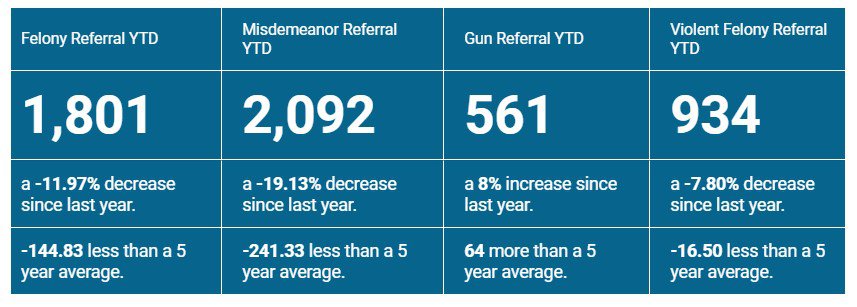
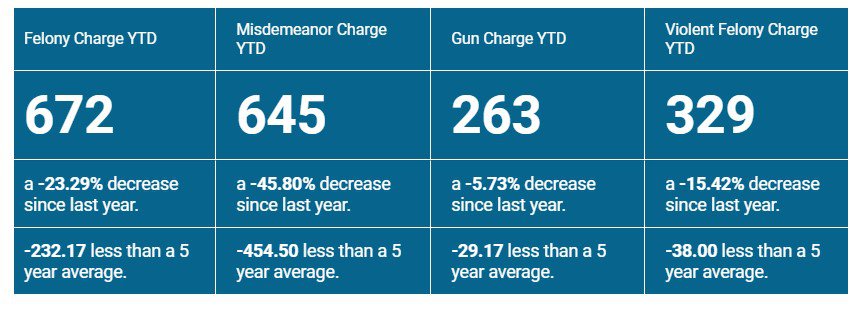
In 2020, the office issued more than 3,000 fewer charges than the year before. That’s the lowest number of charges issued since at least 2015.
You can’t say it’s because police agencies were sending more charges over, tying up the DA’s resources. More than a thousand fewer cases were referred to the DA’s office in 2020 by law enforcement agencies than in 2019, the DA’s statistics show. Other police agencies in the county drove that decline, though; the Milwaukee Police Department’s referrals were slightly up.
We showed the numbers to Dale Bormann, Jr., president of the Milwaukee Police Association, and he said the skyrocketing non-prosecution percentages are bad for morale and community safety. He called the numbers “ridiculously high,” noting that officers wouldn’t refer a case if they didn’t think it was strong enough to be charged.
“It decreases the officers’ and detectives’ morale,” he said. When people “are not charged after doing a crime, they get out there and continue to do crime,” Bormann said. “It brings down the city as a whole.”
Bormann said he believes that Milwaukee County DA John Chisholm “doesn’t want to be seen as the person putting people in jail.”
Wisconsin Right Now’s investigation found:
“No Process” Felony Charges
Milwaukee County DA John Chisholm’s office refused to prosecute about 60% of felony charges referred by local police departments last year, a 7% spike in rejected cases. The first 2 months of 2021 are even worse, with the DA’s office rejecting almost 63% of all requested felony charges.
Here are the referrals and charges by month:
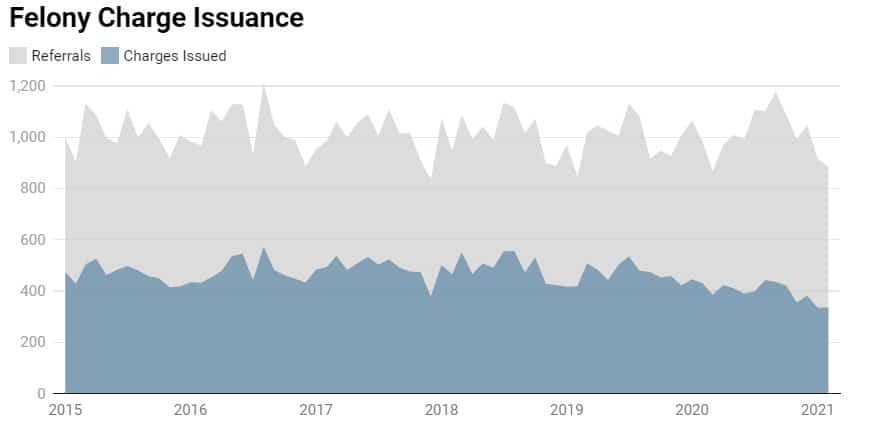
That means Milwaukee County DA John Chisholm’s office refused to charge about 6 of every 10 felony charges in which police asked for prosecution. The “No Process” cases are stacking up.
“No Process” Misdemeanor Cases
It’s even worse when it comes to misdemeanors, with Chisholm’s office not charging about 65% of misdemeanor charges brought forward in 2020. A staggering 82% of cases were rejected in December 2020 alone. 2021 is shaping up even worse, with almost 7 in 10 of all requested misdemeanors charges ruled “No Process.”
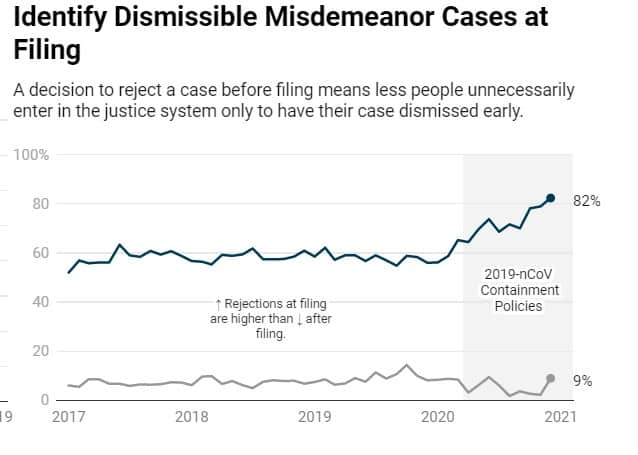
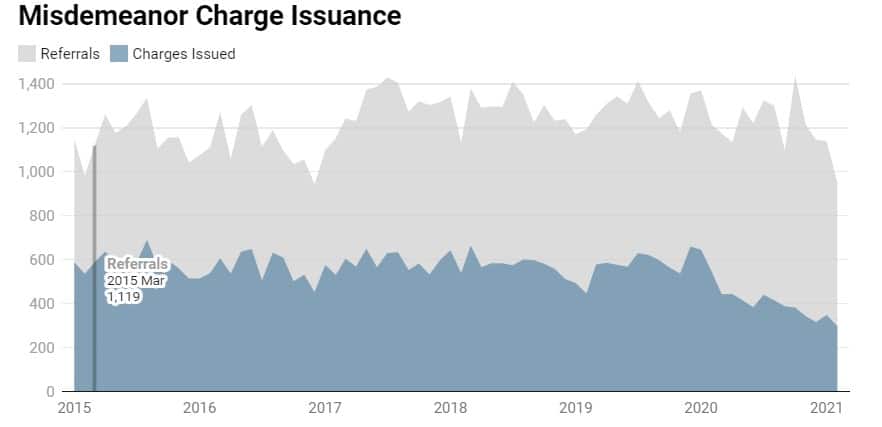
Historically, about half of all misdemeanor cases were not prosecuted.
In some cases, the DA rejects some charges brought over by police but charges others. In other cases, they flatly refuse to prosecute the person at all.
Jail Populations Plummet
Milwaukee County has joined the Safety and Justice Challenge, a program whose “primary purpose of jails is to detain those awaiting trial who are a danger to public safety or a flight risk.” The County’s website explains: “Jailing someone who is neither results in significant costs for families and communities — particularly communities of color — including lost income, parents separated from their children, untreated mental health and substance use challenges, a greater risk of re-offending, and wasted public dollars.” One strategy of the Milwaukee Community Justice Council is listed as follows, “Racial Equity convenes system and community partners to measurably reduce disparities through decision point analysis, shared priority-setting, and training.”
The growing non-prosecution trend is coming against the backdrop of judges who are less likely to incarcerate.
The jail population has plummeted. Since 2015, there has been a 77% reduction in the number of people sentenced to jail, from 2661 in 2015 to 596 in 2020.
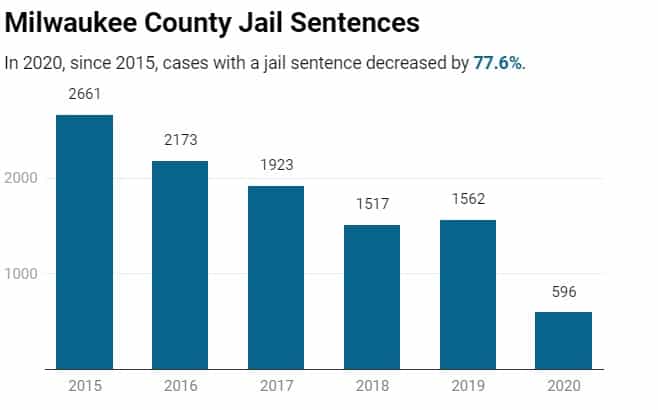
From 2015 to 2019, prison sentences were a consistent 1600 to 1700 a year. Last year, that number was cut almost in half to 846.
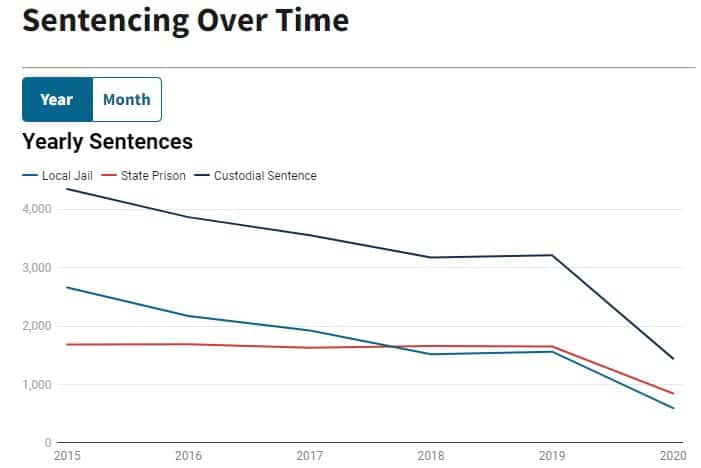
Bormann, of the MPA, believes the issue has been a problem in the Milwaukee County DA’s office for years, saying that many cops believe the DA won’t take tough cases and “a lot of people (in the DA’s office) are afraid of charging people… as a result, there are a lot of people roaming the streets who should be in jail.”
Bormann doesn’t believe the increases are only due to COVID, saying that he believes “liberals want a different justice system out there where no one’s going to jail.” He said that, throughout the country, “liberal prosecutors are not putting people in jail like they should. They are letting people out, and it’s very unfortunate for the person who is a victim of a crime.”
According to Bormann, the courts became “backlogged” due to the pandemic, but “law enforcement officers go to work each and every day regardless of whether COVID is out there.” He felt that the court system should have “figured out a way” to not let things slide.
Racial Disparities
There is an enormous racial disparity in who is benefiting from Milwaukee County DA John Chisholm’s growing refusal to prosecute cases; charges are being dropped against whites at a higher percentage than other races.
The DA’s office charged 16% fewer blacks from 2019 to 2020 but charged 31% fewer whites and 26% fewer Hispanics. In addition, the office charged 4% fewer Asians and 33% fewer Native Americans during the same time period.
From 2019 to 2020, police referred less than 1% fewer charges against blacks, 15% fewer charges against whites, 10% fewer charges against Hispanics, 5.5% fewer charges against Native Americans, and 7.6% more cases against Asians.

In terms of aggregate numbers, the DA’s office charged more blacks in 2020 than all other races combined.
Although the spike in felony “no process” decisions ignited at the start of the COVID-19 pandemic, Milwaukee County law enforcement officers are clearly continuing to investigate and refer charges to the Milwaukee County DA’s office.
No Comment From Milwaukee County DA John Chisholm
What happened when we asked for comment from Milwaukee County DA John Chisholm?
We reached out to Kent Lovern, the spokesperson for Chisholm, and we asked for an interview with Chisholm to get his explanation for the rising numbers. If that were not possible, we asked for a written statement giving explanations. Lovern wrote back that Chisholm declined to comment in any manner. The DA’s website explains, “Reasons charges are not issued include acceptance into a pre-charge diversion program, insufficient evidence/investigation by law enforcement, or when the charges did not rise to the level of a crime.”
However, his data shows that diversions and deferred prosecutions are down.
We found the data on the District Attorney’s own website, where it’s presented as part of a “larger project on Prosecutorial Performance Indicators, an office management, performance measurement and transparency and accountability tool that helps prosecutors’ offices measure their performance toward greater capacity and efficiency, community safety and well-being, and fairness and justice.”
What is the Milwaukee County Safety and Justice Challenge more specifically? Milwaukee County was among 11 sites selected to join the SJC Network in 2016.
Since its public launch, the network has grown into a collaborative of 51 jurisdictions in 32 states. Together, these communities are modeling and inspiring innovations to create more fair, just, and equitable local justice systems across the country.
Sites receive funding and expert technical assistance to advance criminal justice system improvements, reduce racial and ethnic disparities, and strengthen community engagement.
Table of Contents
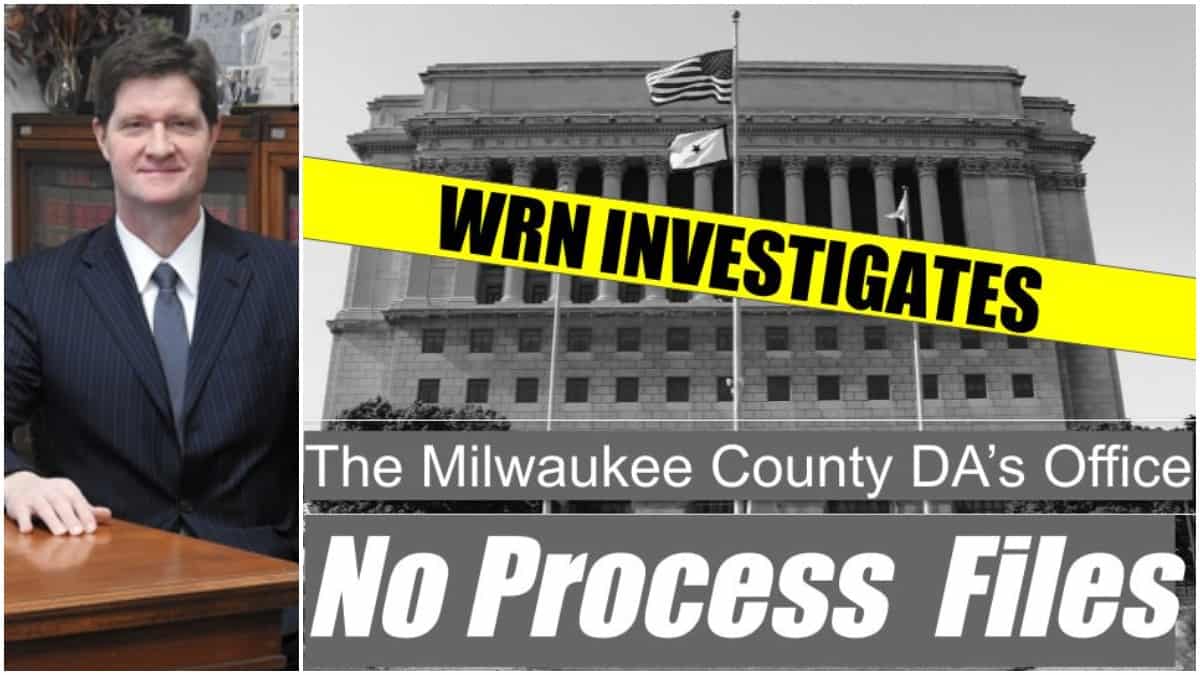
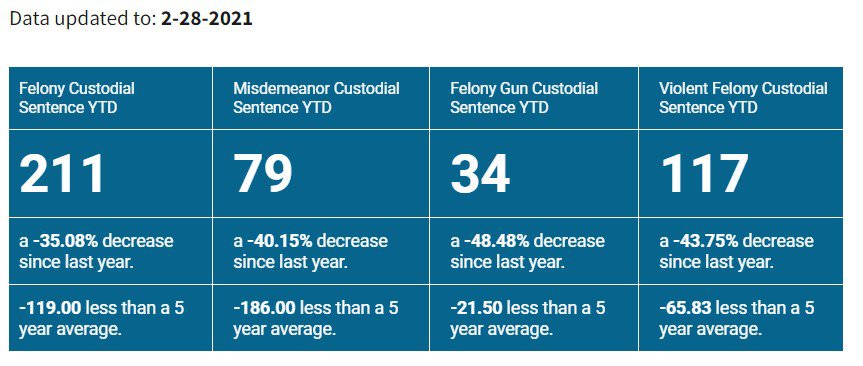
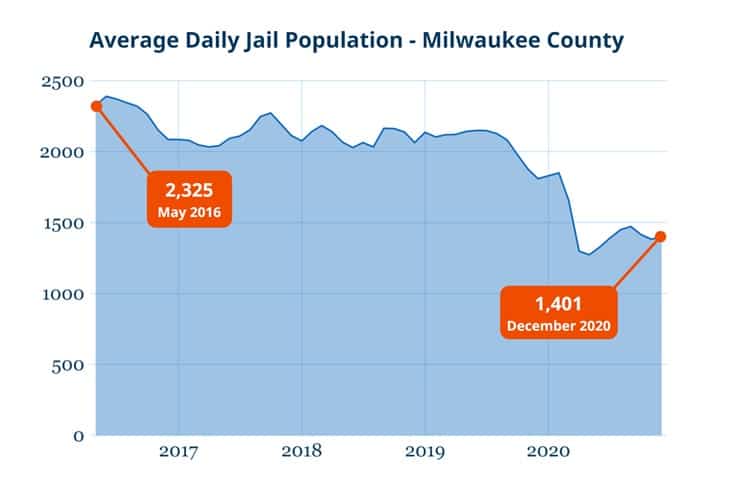









![Mandela Barnes Said ‘Reducing Prison Populations is Now Sexy’ [VIDEO] Reducing Prison Populations is Now Sexy](https://www.wisconsinrightnow.com/wp-content/uploads/2022/09/Collage-Maker-14-Sep-2022-11.44-AM-265x198.jpg)

